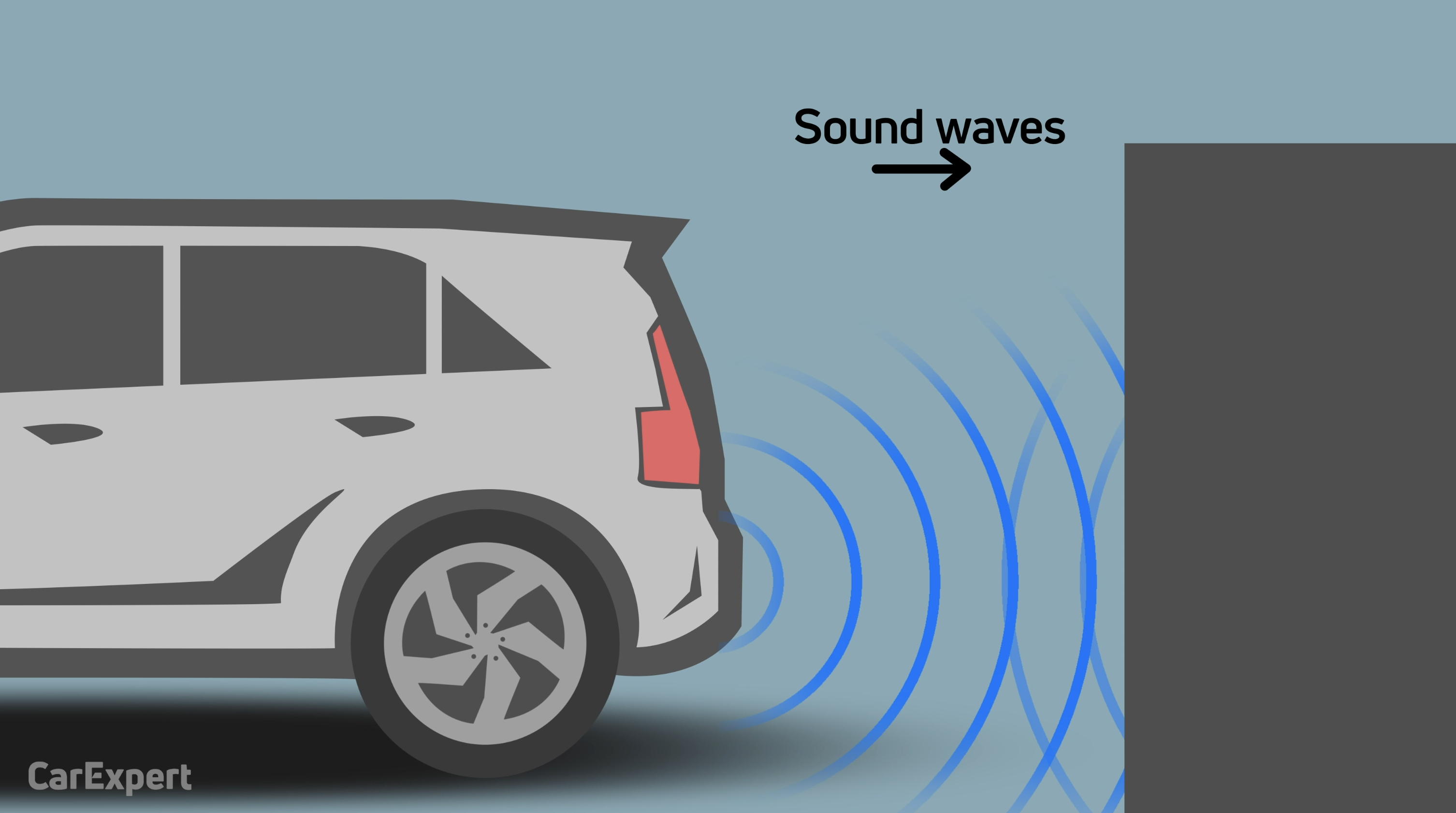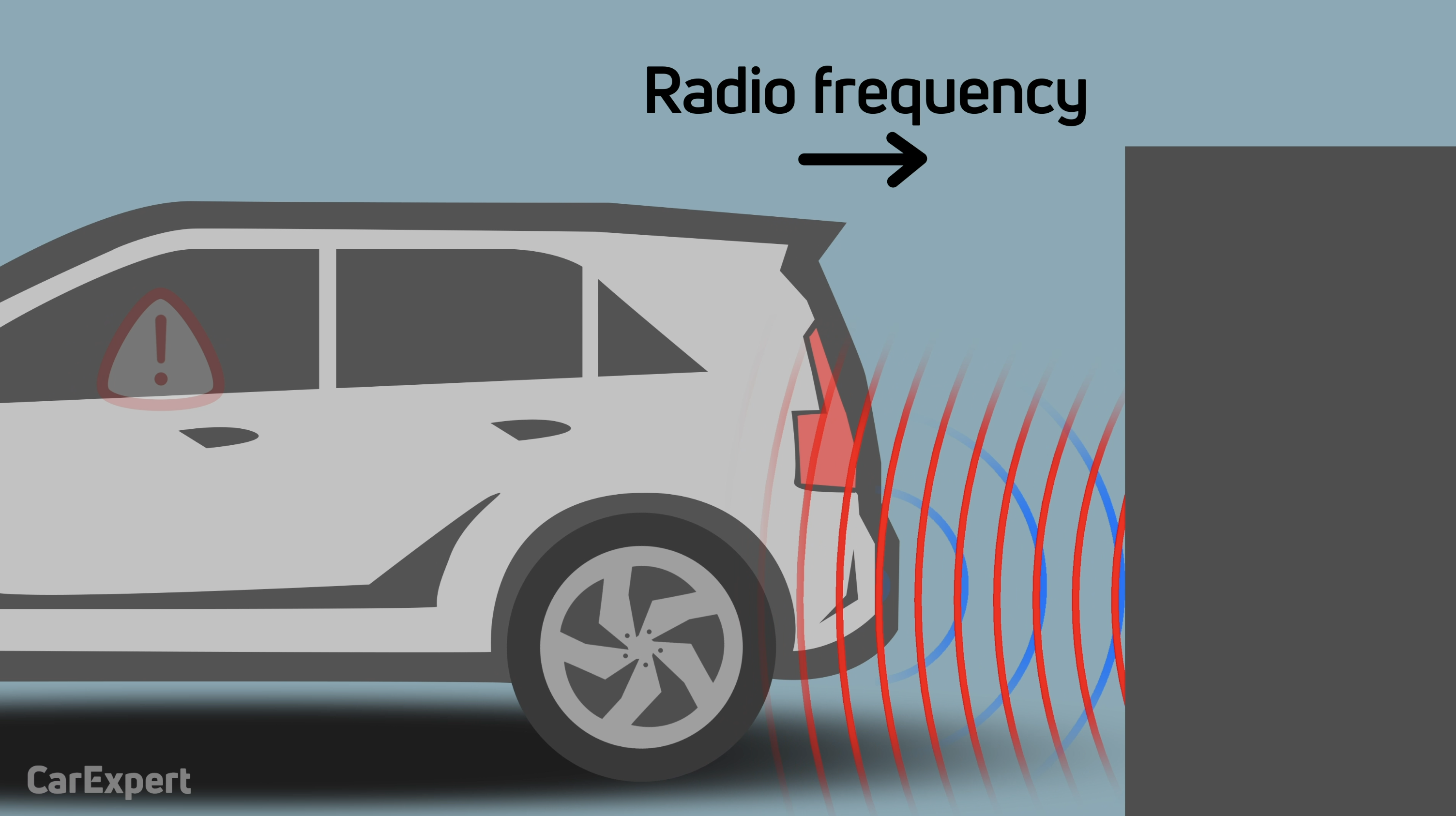Parking sensors help you park your car safely. They detect obstacles around your vehicle.
Parking your car can be stressful. Tight spaces and hidden objects make it difficult. This is where parking sensors come in handy. These sensors use technology to alert you of nearby objects, making parking easier and safer. They are common in many modern vehicles.
How do they work? Let’s explore the magic behind these tiny yet powerful devices. Understanding how parking sensors function can help you appreciate their value and use them effectively. Read on to discover the fascinating world of parking sensors.

Introduction To Parking Sensors
Parking sensors have become a crucial part of modern vehicles. These devices help drivers park safely. They also prevent accidents. In this section, we will explore the basics of parking sensors. We will also understand their importance and their history.
Importance Of Parking Sensors
Parking sensors improve safety. They alert drivers to obstacles. This reduces the chances of collision. These sensors are especially useful in tight spaces. They help drivers park without stress. Parking sensors also protect pedestrians. They warn drivers of people walking behind the car. In short, they make parking easier and safer.
Brief History
Parking sensors were first introduced in the 1970s. They were initially used in luxury cars. These early sensors used ultrasonic waves. Over time, they became more advanced. By the 1990s, parking sensors became common in many vehicles. Today, they are a standard feature in most cars. The technology has also improved. Modern sensors use cameras and radar. This makes them more accurate and reliable.
Types Of Parking Sensors
Parking sensors play a crucial role in ensuring safe and efficient parking. These sensors help drivers by detecting obstacles, thus preventing potential accidents. There are different types of parking sensors available, each with unique features and benefits. Let’s explore some of the most common types.
Ultrasonic Sensors
Ultrasonic sensors use sound waves to detect objects. They emit high-frequency sound waves that bounce off obstacles. The sensor then measures the time it takes for the echo to return. This information helps determine the distance to the object. These sensors are usually installed in the front and rear bumpers of a vehicle.
Ultrasonic sensors work well in various weather conditions. They can detect objects regardless of color or material. However, they might struggle with very small or thin objects. Despite this, they are widely used due to their reliability and effectiveness.
Electromagnetic Sensors
Electromagnetic sensors create an electromagnetic field around the vehicle. They detect disturbances in this field caused by nearby objects. Unlike ultrasonic sensors, they do not emit sound waves. This type of sensor is often installed inside the bumpers, making them less visible.
Electromagnetic sensors can detect objects at close range. They are effective even when the vehicle is stationary. These sensors are less affected by dirt or ice on the bumper. Their performance can be impacted by the type of material of the object detected. Nonetheless, they offer excellent detection capabilities.
How Ultrasonic Sensors Work
When you think about parking sensors, ultrasonic sensors are a common type. These devices help drivers park safely by detecting obstacles. But how do they work? Let’s dive into the fascinating world of ultrasonic sensors.
Sound Wave Emission
Ultrasonic sensors emit sound waves, similar to how bats navigate in the dark. These sound waves are at frequencies higher than human hearing. They bounce off objects and return to the sensor.
Imagine driving into a tight parking spot. The sensors send out quick sound pulses. They then listen for echoes to determine how close you are to obstacles. This helps you avoid bumps and scratches.
Distance Calculation
How do these sensors calculate distance? It’s quite simple. They measure the time it takes for the sound waves to return. The shorter the time, the closer the object.
Think of it like a game of catch. You throw a ball and measure how long it takes to come back. The faster it returns, the closer your friend is. Ultrasonic sensors use the same principle with sound waves.
Next time you’re parking, pay attention to the beeps. They get faster as you get closer to an obstacle. This real-time feedback keeps you safe and stress-free.
Have you ever wondered if these sensors can be affected by weather? Heavy rain or snow might impact their accuracy. This makes understanding your sensors even more crucial.
So, next time you park, remember the magic of ultrasonic sensors. They silently guide you, ensuring your car stays dent-free. How do you feel about trusting technology with your parking?
How Electromagnetic Sensors Work
Electromagnetic sensors are a popular choice for parking systems. They use electromagnetic fields to detect objects around the vehicle. Understanding how they work can help you appreciate their role in parking safety.
Electromagnetic Fields
Electromagnetic sensors create an invisible field around the car. This field extends a short distance from the vehicle. It serves as a detection area for objects.
The sensor emits an electromagnetic signal. The signal travels outward until it hits an object. The object then disrupts the signal, indicating its presence.
Object Detection
When an object enters the electromagnetic field, the sensor detects the change. It measures the time it takes for the signal to return. This information helps the system determine the object’s distance from the car.
The sensor then sends this data to the car’s computer. The computer processes the information and alerts the driver. This alert could be a sound, a visual warning, or both.
Electromagnetic sensors excel at detecting objects close to the car. They are effective in various parking situations. Their precision and reliability make parking easier and safer.
Installation Process
The installation process of parking sensors can be a straightforward or complex task, depending on your approach. Whether you opt for a DIY installation or professional help, understanding the steps involved can save you time and ensure your sensors work efficiently. Let’s dive into the options available for installing parking sensors.
Diy Installation
DIY installation is a great way to save money and learn a new skill. However, it requires attention to detail and some basic tools.
Start by purchasing a parking sensor kit that suits your vehicle. Most kits come with detailed instructions, making it easier for you to follow along.
Begin by marking the spots where you want to install the sensors on your bumper. Use the provided template or measure the distances yourself. Make sure the sensors are evenly spaced for optimal coverage.
Drill holes into the marked spots. Ensure the holes are the correct size for the sensors. Insert the sensors into the holes and secure them properly.
Next, run the wiring from the sensors to the control unit. This usually involves routing the wires through the vehicle’s interior. Connect the wires to the control unit as per the instructions.
Finally, connect the control unit to your vehicle’s power source. This might involve tapping into the reverse light wiring. Test the sensors to ensure they are working correctly.
Installing parking sensors yourself can be rewarding. However, if you are not comfortable with electrical work, it might be best to seek professional help.
Professional Installation
If DIY isn’t your thing, professional installation is a reliable alternative. It ensures your sensors are installed correctly and saves you the hassle of doing it yourself.
When you choose professional installation, you’re paying for expertise. Technicians have the tools and experience to install sensors efficiently.
Start by finding a reputable service provider. Read reviews and ask for recommendations to ensure you choose a reliable installer.
Once you select a provider, schedule an appointment. The technician will assess your vehicle and discuss the best placement for the sensors.
The installation process typically takes a few hours. The technician will drill the necessary holes, run the wiring, and connect the sensors to the control unit.
After installation, the technician will test the sensors to ensure they are functioning correctly. They may also provide a brief tutorial on using your new parking sensors.
Professional installation might cost more, but it gives you peace of mind. You can be confident that the sensors are installed correctly and will work when you need them most.
Have you considered installing parking sensors on your vehicle? Whether you choose DIY or professional installation, understanding the process can help you make an informed decision. Share your thoughts and experiences in the comments below.
🚗 Still Guessing While Parking?
Don’t risk dents or dings every time you reverse. Accurate parking starts with the right sensor system.
Whether you’re a beginner or a daily commuter, these parking sensors give you real-time alerts and full rear coverage—without expensive installs.
- ✅ Easy DIY installation
- ✅ Detects objects instantly while reversing
- ✅ Works on all car types: sedans, SUVs, trucks
🛠️ Best Parking Sensor Kits on Amazon:
👉 View on Amazon. Limited Stock! Buy Now
Accurate distance alerts with easy rear bumper mount.
👉 View on Amazon. Limited Stock! Buy Now
Visual + audible alert system. Great for tight city parking.
👉 View on Amazon. Limited Stock! Buy Now
Simple, effective, and compatible with most vehicles.
💡 Pro Tip: Pair these with a wireless backup camera for ultimate reversing confidence.

Credit: www.carexpert.com.au
Advantages Of Using Parking Sensors
Parking sensors provide many benefits to drivers. These small devices help in various ways, making parking a smoother and safer experience. Let’s explore some of the key advantages of using parking sensors.
Enhanced Safety
Parking sensors make driving safer. They detect obstacles and alert the driver. This reduces the risk of accidents. Drivers can avoid hitting other cars, walls, or objects. It also protects pedestrians. The sensors help in spotting people who might be behind the vehicle. This feature is especially useful in crowded places. It ensures everyone’s safety.
Ease Of Parking
Parking becomes much easier with sensors. They guide the driver into tight spaces. The sensors provide real-time feedback. This helps in adjusting the car’s position. Drivers feel more confident while parking. Even new drivers can park without stress. The constant beeping sound indicates the distance from obstacles. It simplifies parallel and reverse parking. The whole process becomes less time-consuming.
Common Issues And Troubleshooting
Parking sensors detect obstacles around your vehicle using ultrasonic or electromagnetic waves. Issues may include sensor malfunction or interference from external objects. Troubleshooting often involves checking sensor alignment and cleaning.
When it comes to parking sensors, understanding how to troubleshoot common issues can save you time and frustration. Parking sensors are supposed to make your life easier, but sometimes they don’t work as expected. Let’s dive into some common problems you might encounter and how you can address them effectively.
Sensor Malfunction
One common issue with parking sensors is malfunctioning sensors. You might notice that one or more of your sensors stop working. This can happen due to dirt, damage, or faulty wiring. Start by cleaning the sensors. Use a soft cloth to gently wipe away any dirt or debris. This simple step can often resolve the issue.
If cleaning doesn’t help, inspect the sensors for visible damage. Cracks or dents can cause malfunction. In such cases, you may need to replace the damaged sensor. Check the wiring connections. Sometimes, loose or damaged wires can be the culprit. Ensure all connections are secure and look for any signs of wear and tear.
False Alarms
False alarms can be incredibly frustrating. Imagine your sensors beeping continuously when there’s nothing around. This issue can arise from various factors. One common cause is interference. Parking sensors can pick up signals from other electronic devices.
To minimize this, try parking in different locations to see if the false alarms persist. Check the sensor alignment. Misaligned sensors can misinterpret objects and trigger false alarms. Make sure all sensors are properly positioned. Environmental factors like rain, snow, or extreme temperatures can also affect sensor performance. If false alarms occur during specific weather conditions, this might be the reason.
In my experience, even a small sticker or mud splatter on the sensor can cause false alarms. Always ensure sensors are clean and unobstructed. Have you ever had a parking sensor issue that seemed unsolvable? What steps did you take to fix it? Share your thoughts in the comments below! By addressing these common issues, you can keep your parking sensors in top shape and ensure a smoother parking experience.

Credit: www.carexpert.com.au
Future Of Parking Sensors
The future of parking sensors promises exciting developments. As technology evolves, these devices will become smarter, more efficient, and more integrated with modern vehicles. This section explores how parking sensors will change in the coming years.
Integration With Smart Cars
Smart cars are on the rise. Parking sensors will seamlessly integrate with these vehicles. They will communicate with other car systems. This will provide a unified driving experience. Drivers will receive real-time updates and alerts. Parking will become easier and safer.
Advancements In Technology
Parking sensors will benefit from technological advancements. New sensors will be smaller and more accurate. They will detect obstacles more precisely. This will reduce the risk of accidents. AI and machine learning will play a significant role. These technologies will help sensors learn from past experiences. They will improve over time.
Wireless technology will enhance parking sensors. This will reduce installation complexity. It will also make the sensors more reliable. Future sensors will work in all weather conditions. Rain, snow, or fog will not affect their performance. This will ensure consistent safety and convenience for drivers.
Frequently Asked Questions
How Does The Parking Sensor Work In A Car?
Parking sensors use ultrasonic or electromagnetic waves to detect obstacles. They alert drivers through visual or auditory signals, ensuring safe parking.
What Triggers Front Parking Sensors?
Front parking sensors trigger when they detect obstacles in front of the vehicle. They use ultrasonic or electromagnetic waves.
What Are The Disadvantages Of Parking Sensors?
Parking sensors can malfunction in extreme weather, providing inaccurate readings. They may not detect small or low obstacles. Installation and repair costs can be high. Over-reliance on sensors can reduce driver awareness and judgment.
Do Parking Sensors Work Automatically?
Yes, parking sensors work automatically. They detect obstacles and alert the driver through beeps or visual indicators.
Final Thoughts
Parking sensors play a vital role in enhancing driving safety. They detect obstacles and help avoid collisions. With simple installation, these sensors provide peace of mind. Understanding their function can make parking easier. These systems are now common in many vehicles.
So, next time you park, trust your sensors. They work to keep you and your car safe.
Disclosure: As an Amazon Associate, I may earn from qualifying purchases at no extra cost to you. Amazon and the Amazon logo are trademarks of Amazon.com, Inc, or its affiliates.
- Amazon, Amazon Prime, the Amazon logo and Amazon Prime logo are trademarks of Amazon. com, Inc. or its affiliates.

I am Sadman, the founder of CarSensorHub.com, where I share my passion for cars and technology. I specialize in writing detailed reviews and helpful guides on car gadgets, accessories, safety tools and many more. My mission is to help car owners discover the best products and tips to improve their driving experience and stay safe on the road.



